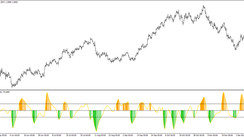Oil quotes moved back to growth after a strong decline last week. At the time of this article's publication, WTI crude oil futures were traded near $ 69.00 per barrel.
An additional impetus for the quotes of commodities and oil received yesterday after the release of the Department of Energy report on oil reserves in the United States and, especially, after the publication of the report of the US Department of Labor, according to which in July consumer prices in the United States rose by 0.5% after rising by 0.9% in June. In annual terms, consumer inflation rose by 5.4%. The core CPI, which excludes food and energy prices, rose 0.3% in July from the previous month, after rising 0.9% in June.
Thus, the data from the Ministry of Labor indicated a slowdown in inflation, and market participants concluded that the Fed would not rush to start curtailing stimulus measures.
As a result, after the publication of the CPI indices, the dollar dropped sharply at the beginning of yesterday's American session. The DXY dollar is down 15 points after hitting a 4-month high at 93.19 yesterday again. At the start of today's European session, DXY futures are traded near 92.89 mark.

Nevertheless, economists believe that the rate of inflation may become more moderate than in recent years, but it will not slow down to pre-crisis levels. In particular, the rise in wages (according to data released on Friday, the average hourly wages on an annualized basis increased by 5% over the past three months) will force many American companies to compensate for the increase in costs by increasing selling prices, which, in turn, will spur inflation again. And this will once again intensify talk about the possibility of an earlier increase in interest rates by the Fed and give the dollar a new upward impetus.
As for the weekly data published yesterday from the US Department of Energy, according to them, oil reserves in the country fell by 0.447 million barrels (according to the data published a day earlier by the American Petroleum Institute (API), weekly stocks fell by 0.816 million barrels). The reduction in oil reserves in American oil storage facilities is a positive factor for oil prices. However, this positive factor is counterbalanced by yesterday's calls by US President Joe Biden to OPEC. According to Biden, the coalition should return to discussing a complete rejection of production cuts.
Another negative factor was the publication on Thursday of the monthly report of the International Energy Agency (IEA). According to the experts of this agency, in 2022, a surplus of supply may re-emerge. The rapid spread of the delta strain and economic implications of it mean that the global market will need less oil this year and possibly next year than previously expected, the IEA said in a report.
Moreover, the spread of the delta strain coincided with the planned increase in OPEC+ production. This circumstance also prompts to abandon forecasts of a significant shortage of supply.
Thus, positive factors may not be enough for a new leap "to the north" in oil prices. If the dollar continues to strengthen, the most likely scenario will be the resumption of the decline in oil prices.
From the upcoming news on the oil market, one should pay attention to the publication on Friday of the report on oil platforms from the oilfield services company Baker Hughes (at 17:00 GMT). Previous data from Baker Hughes reflected an increase in the number of active rigs to 387 units (versus 385, 387, 380, 378, 376, 372, 365, 359, 356, 352, 344 in previous reporting periods). It is obvious that the number of oil companies in the US is growing again, which is a negative factor for oil prices. Their next growth will also have a negative impact on oil quotes, although it will be of a short-term nature.
As for the prospects for the dollar, today it is worth paying attention to the publication at 12:30 (GMT) of the weekly report of the US Department of Labor with data on the number of jobless claims. Another decrease in their number is expected (for initial applications - to 375,000 from 385,000, 399,000, 419,000 in previous weekly reporting periods).
Since the end of May, the number of initial jobless claims has fluctuated between 368,000 and 424,000. This is above the pre-crisis level, albeit below the highs reached at the beginning of the pandemic. In 2019, before the Covid-19 pandemic began, the average weekly initial filings were 218,000.
If the data of the Ministry of Labor are confirmed, they will once again remind of the continued improvement in the American labor market after its landslide in the first half of 2020. In this case, the dollar is likely to rise after their publication, which, in turn, may negatively affect the quotes of commodities, including oil.





